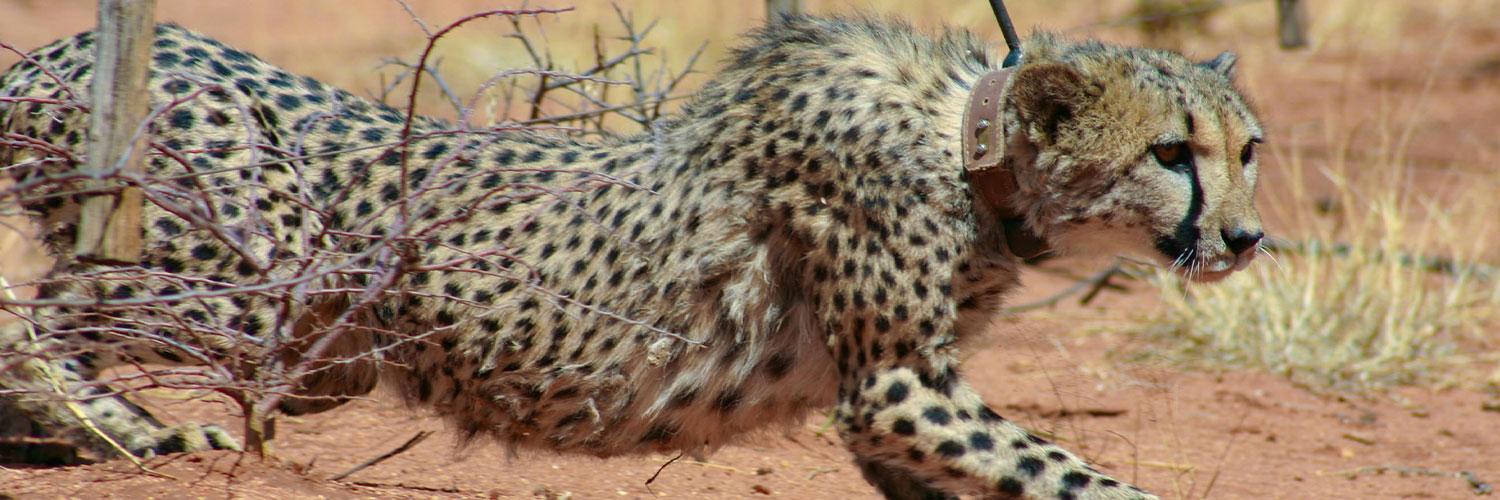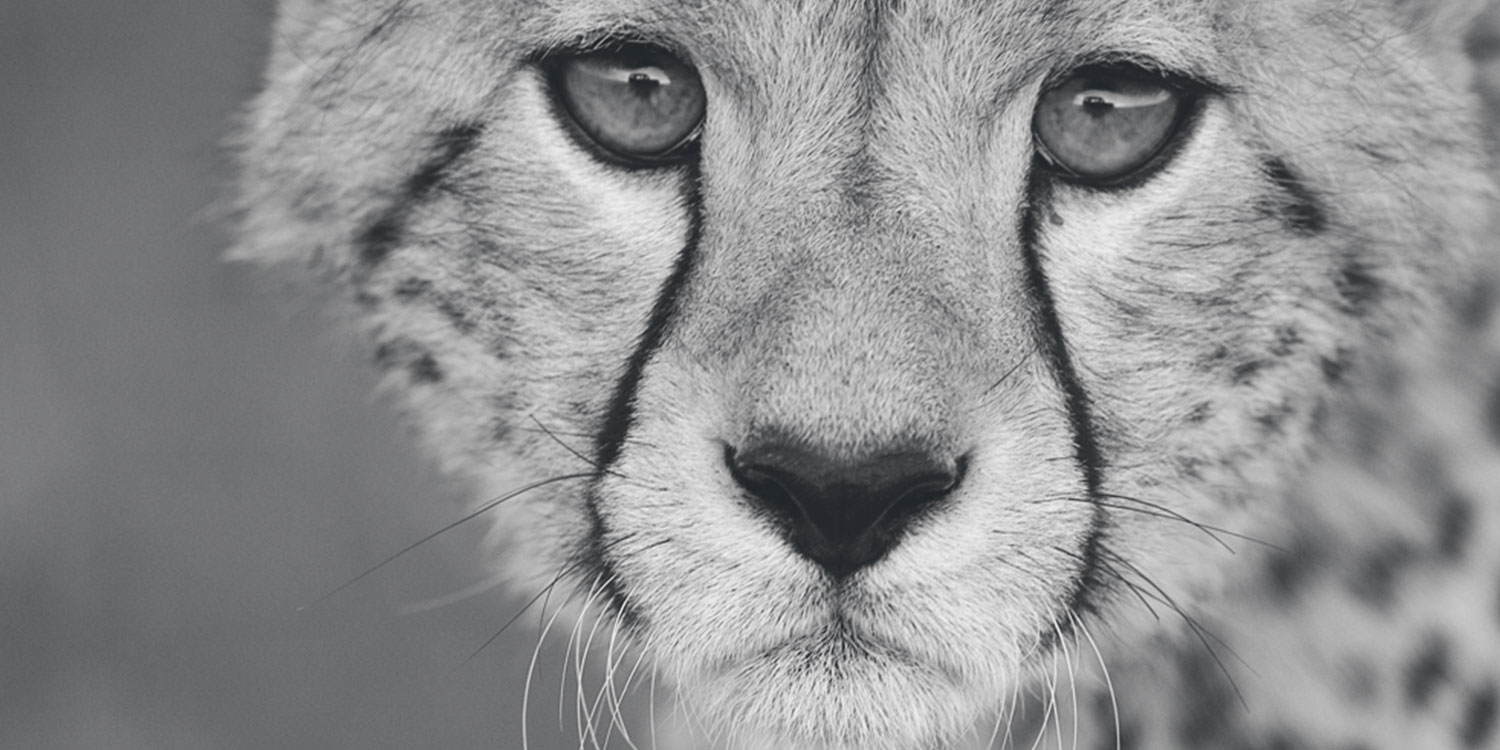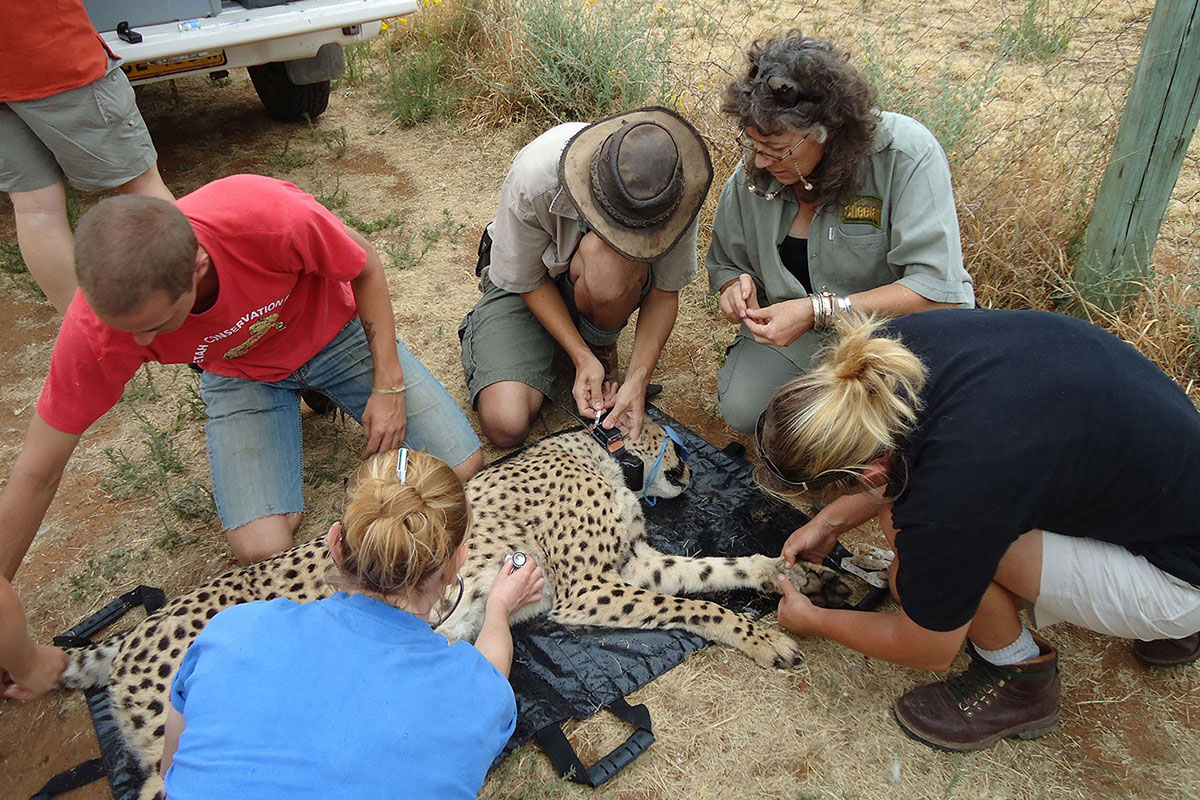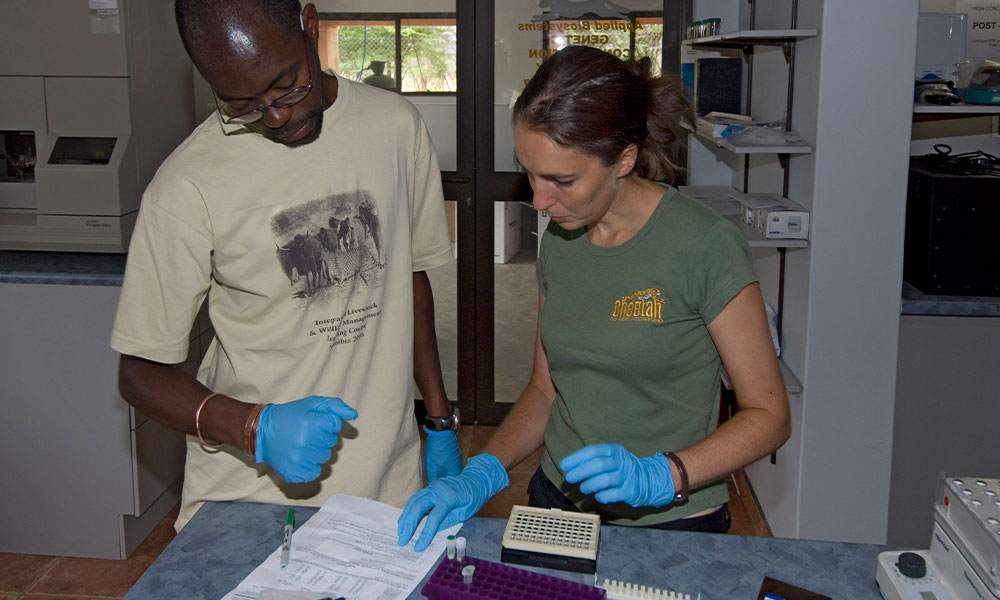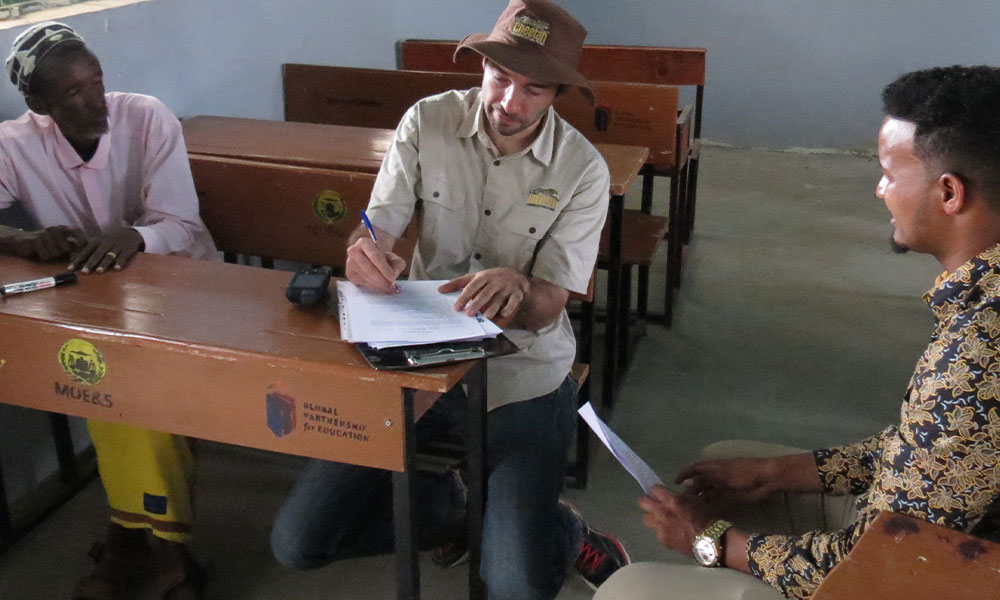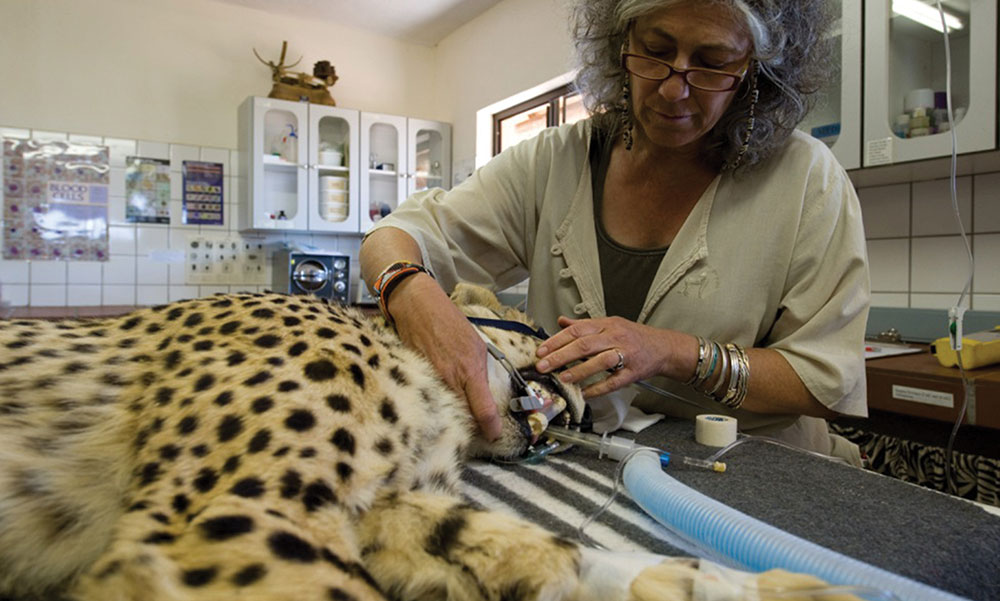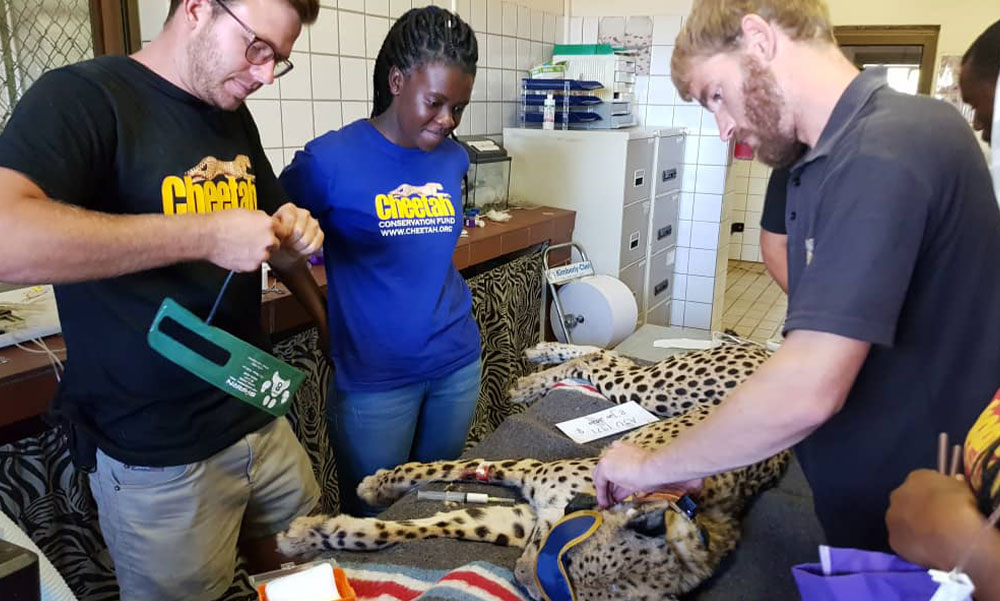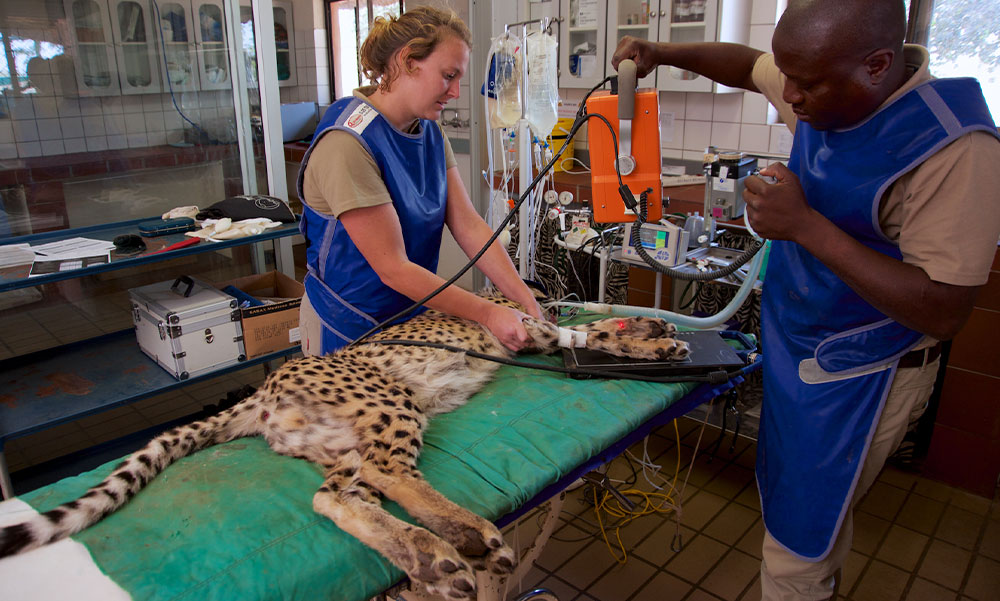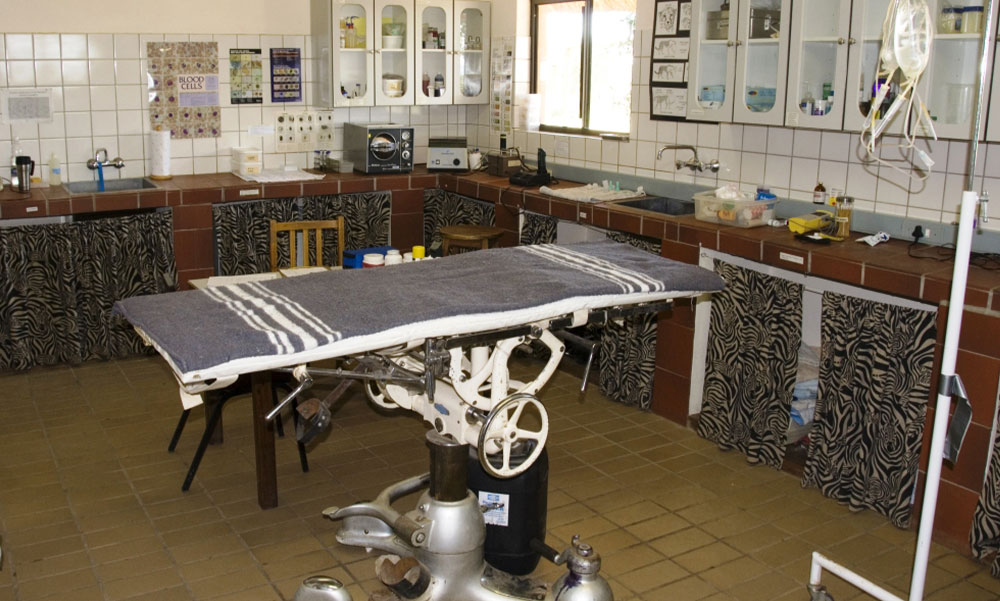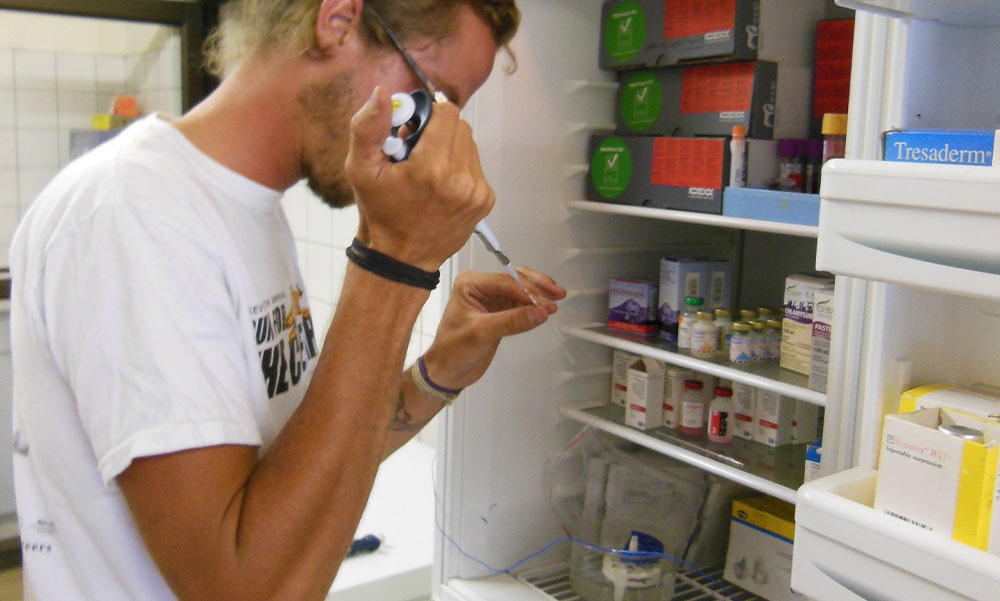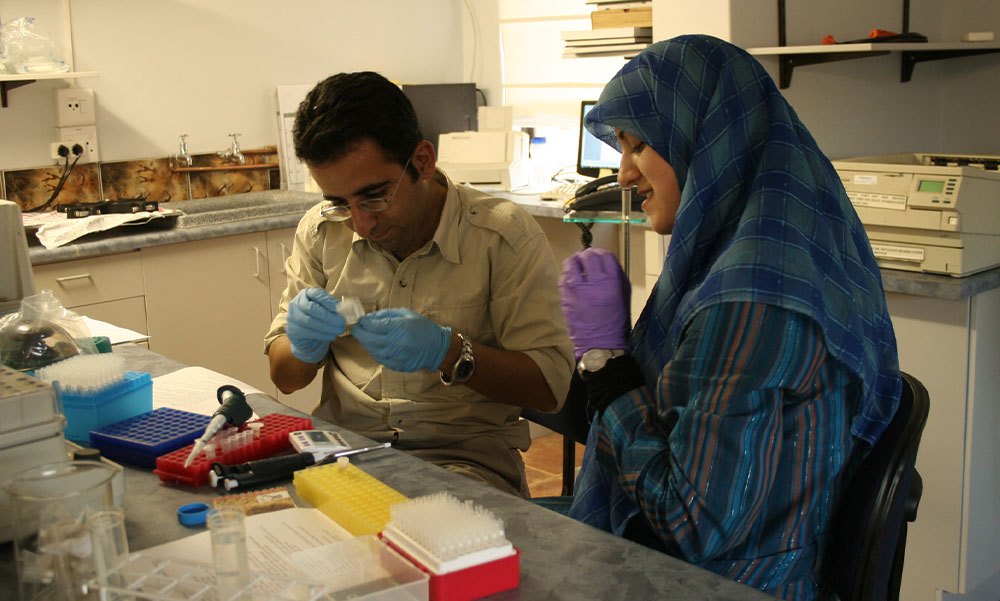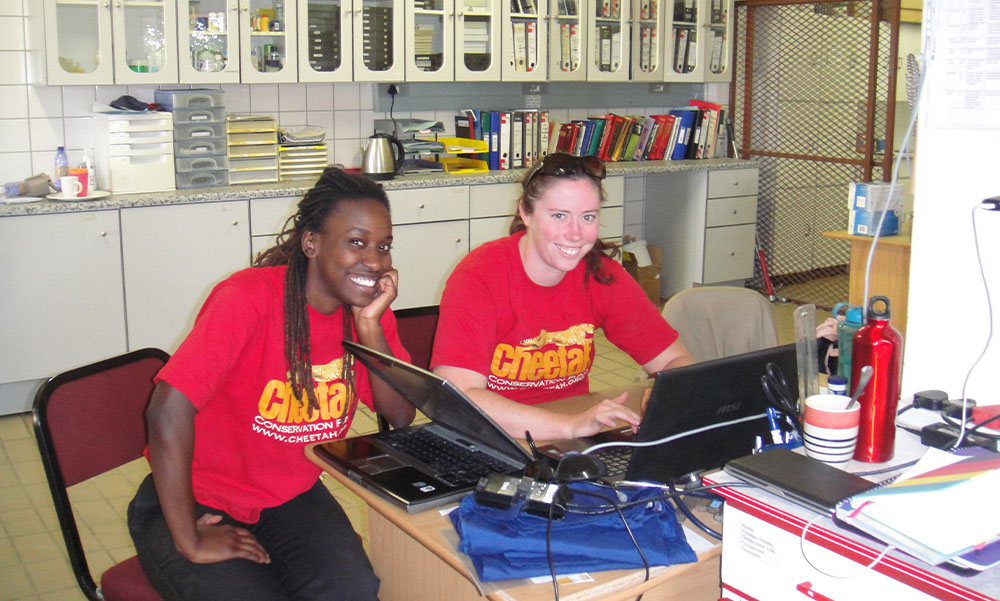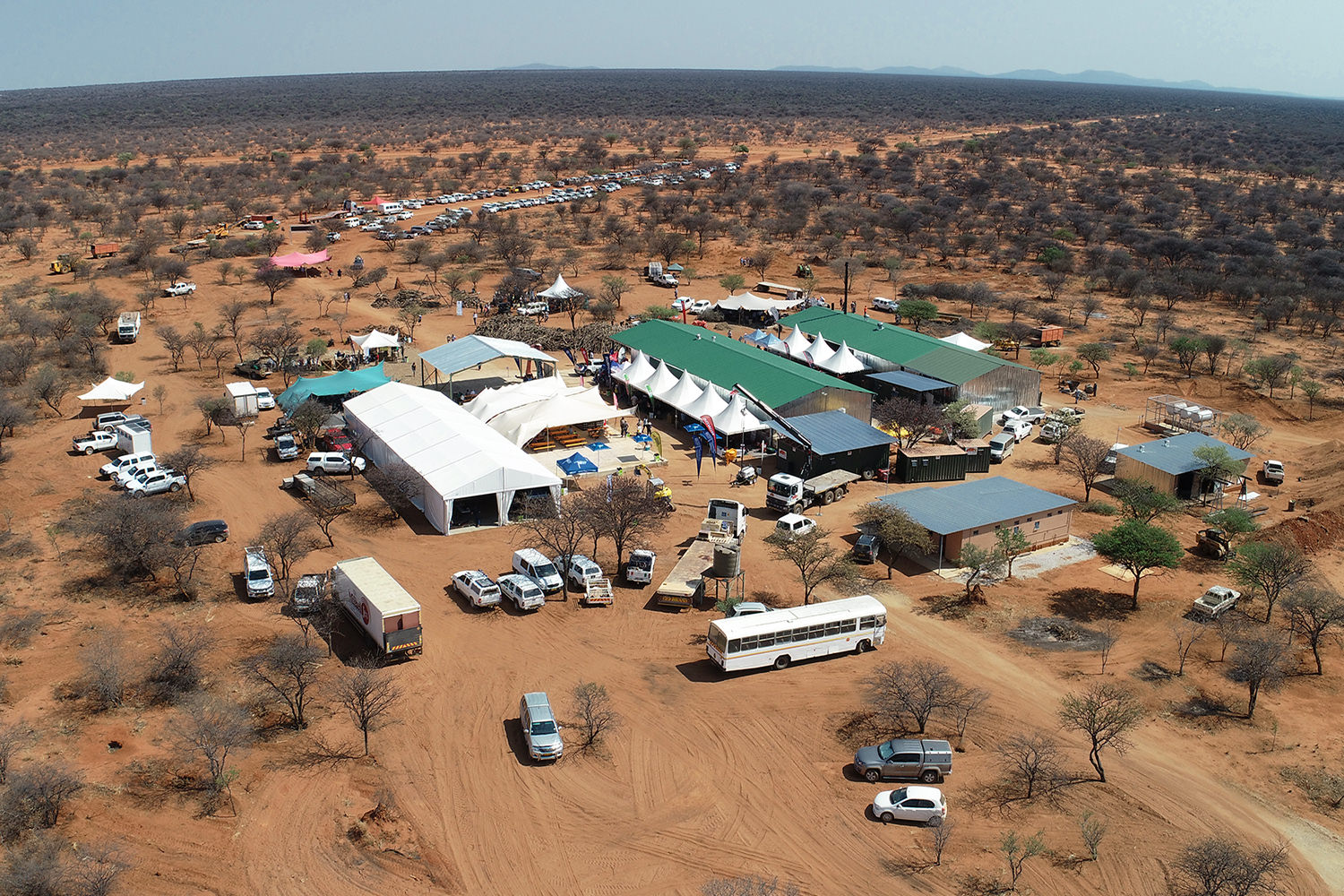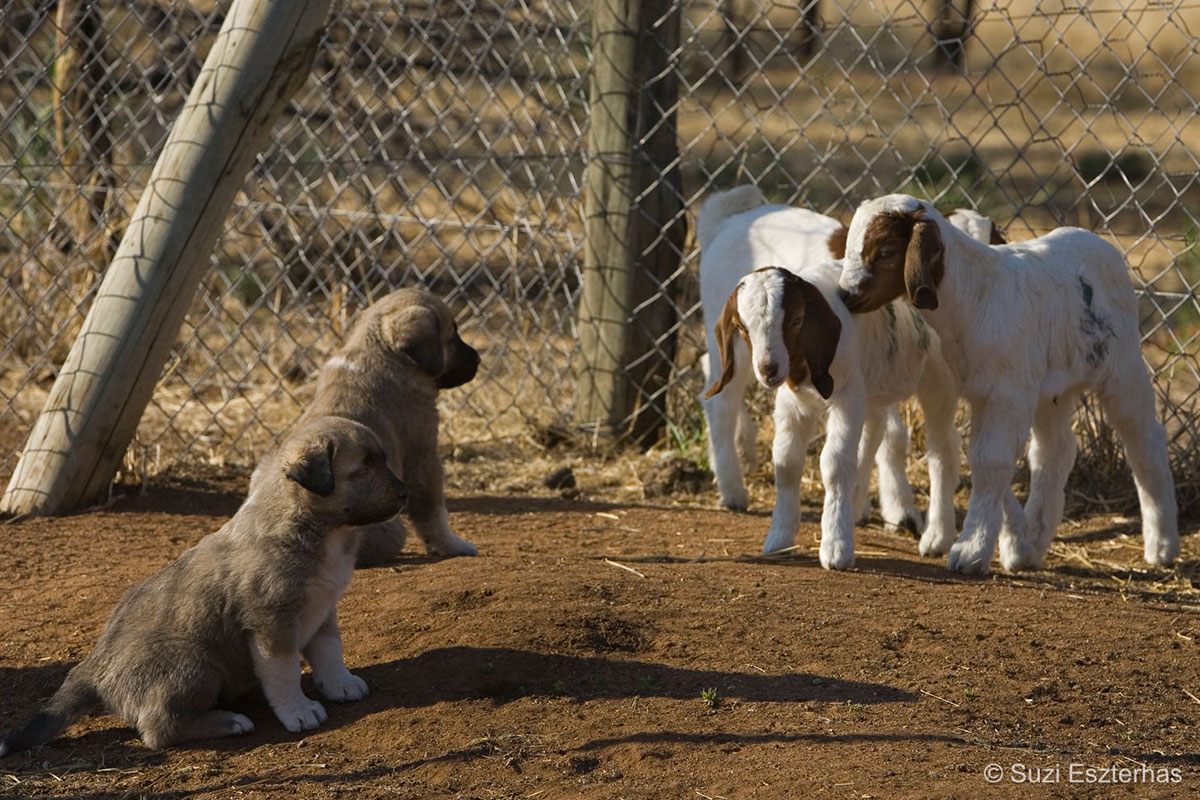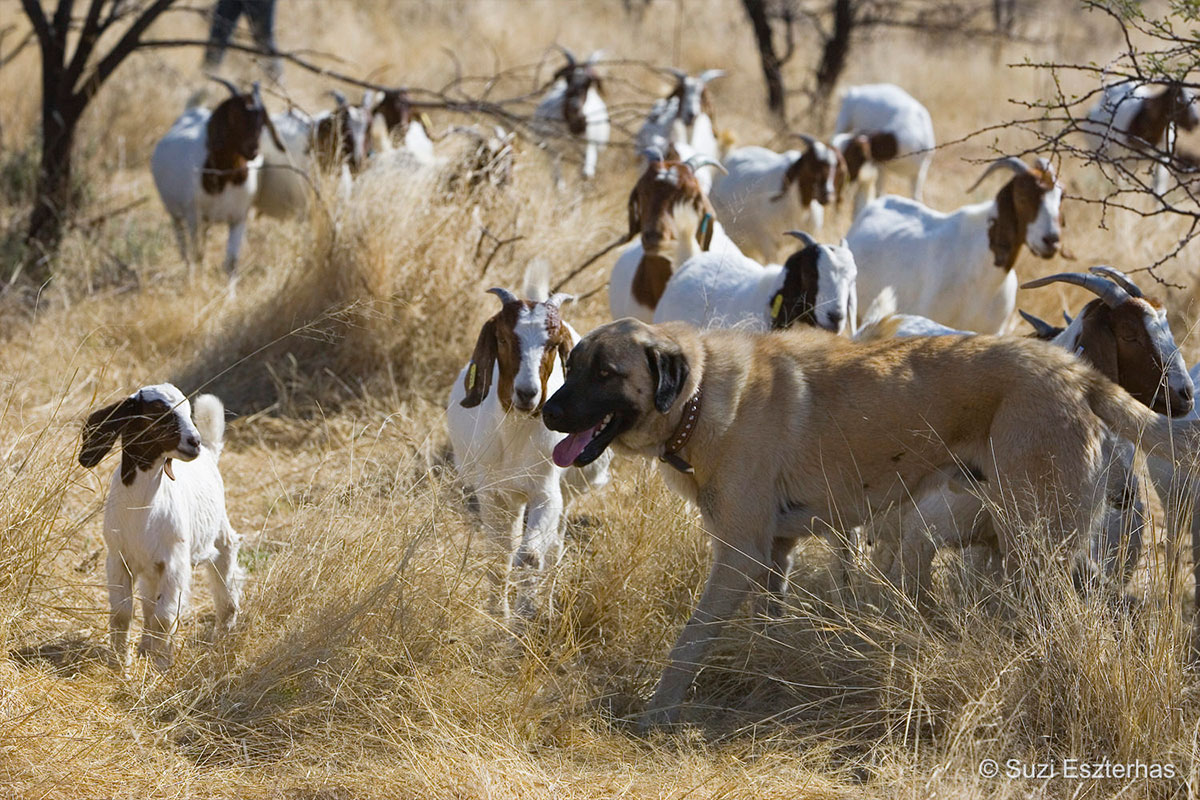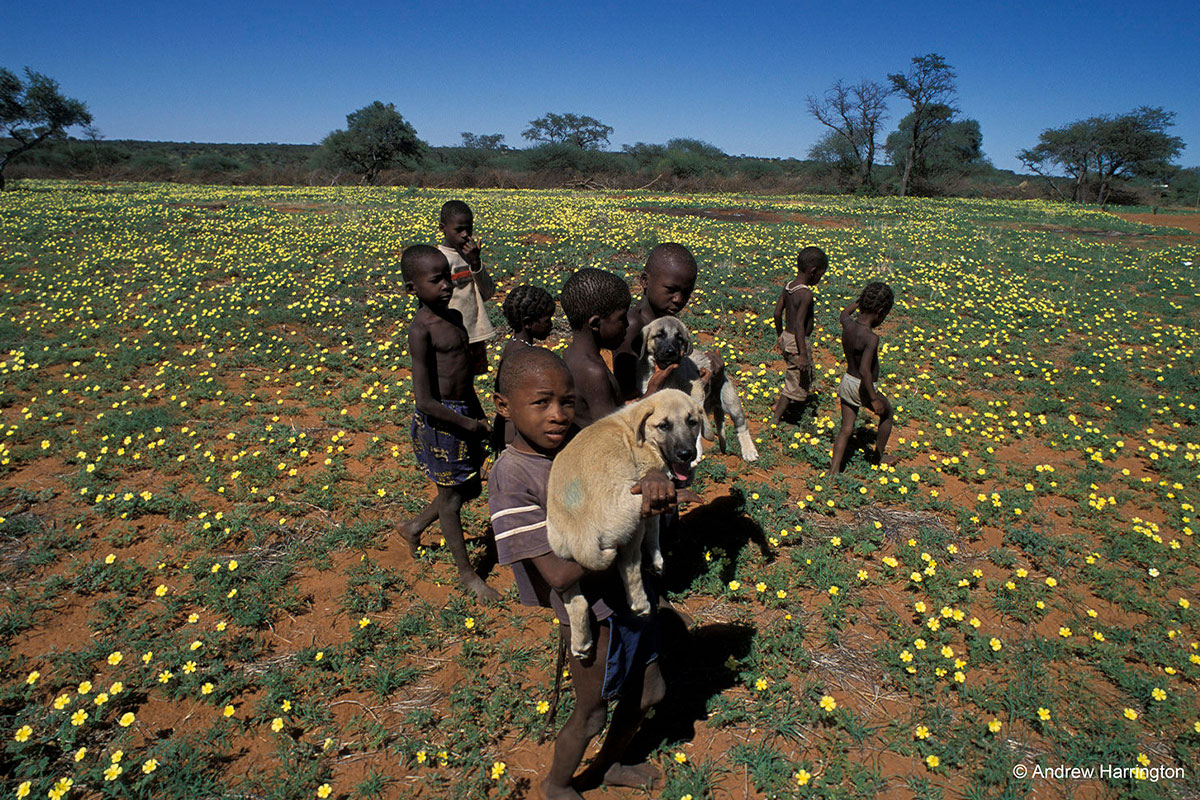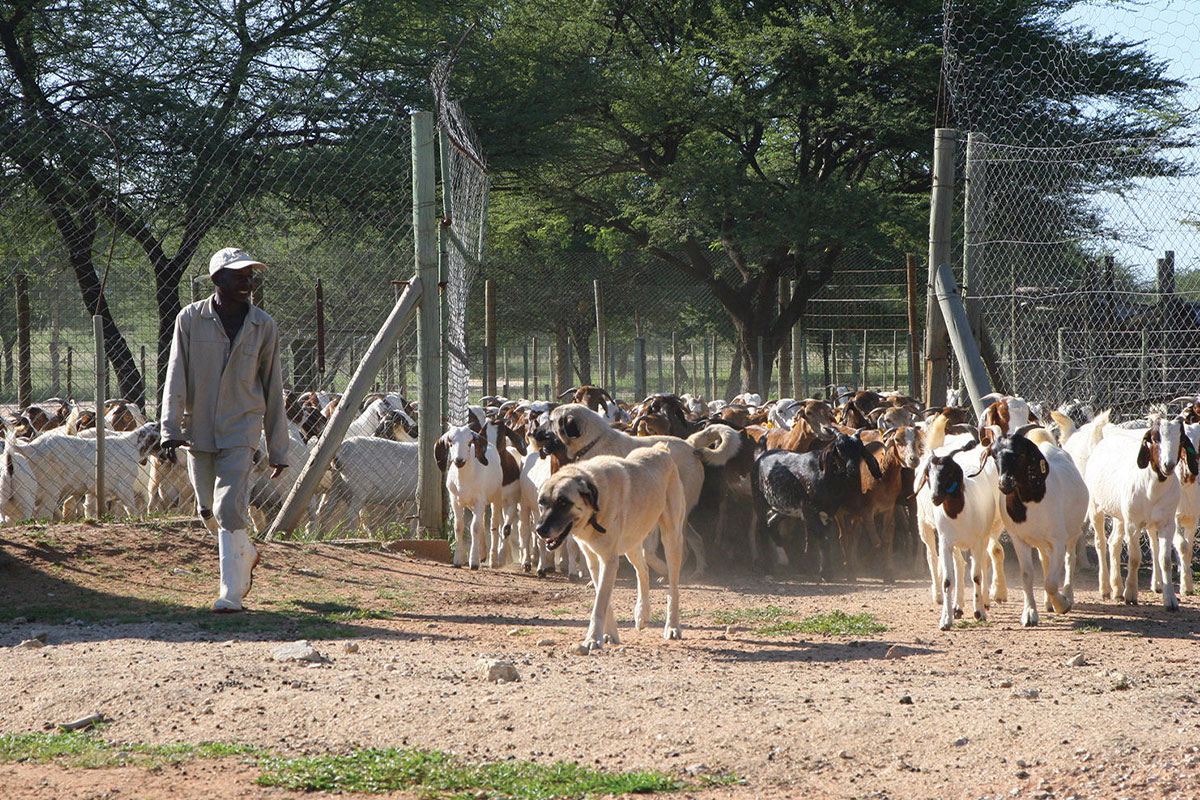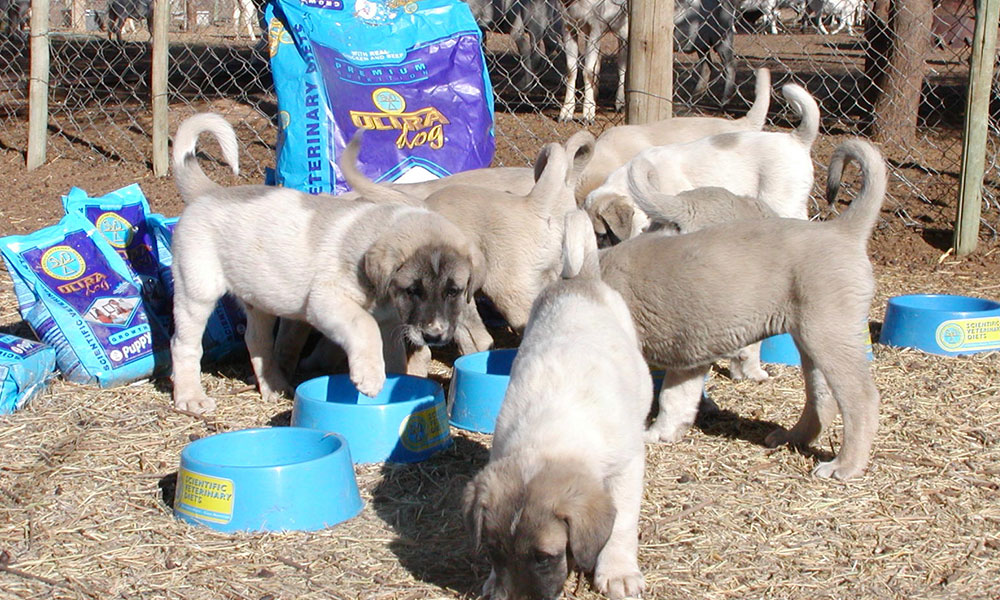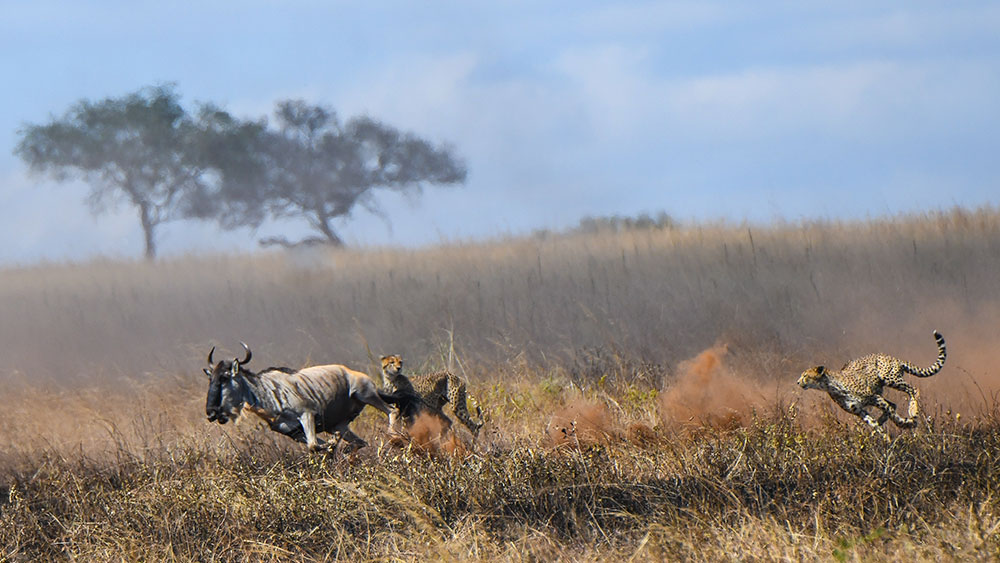Research
Scientific research is the backbone of CCF’s education and conservation activities. CCF’s scientific research on cheetahs focuses on a number of aspects of the cheetah’s life cycle, biology and genetics. Research projects also include ecology, human-wildlife conflict, agriculture, and biomass energy.
The Life Technologies Conservation Genetics Laboratory
CCF is home to a world class research facility that is unique in Africa. The Life Technologies Conservation Genetics Laboratory is the only fully-equipped genetics lab in situ at a conservation facility in Africa. From this facility, CCF collaborates with scientists around the globe. Research not only benefits the cheetah and its ecosystem, but other big cats and predators as well.
Scat Detection Dogs
Trained scat detection dogs help CCF geneticists find cheetah scat in the field. Scat dogs use different signals to their handler to indicate what type of animal scat is present. Once the sample is collected it is taken to the laboratory. DNA is extracted to identify individual cheetahs and understand cheetah and other carnivore population structures.
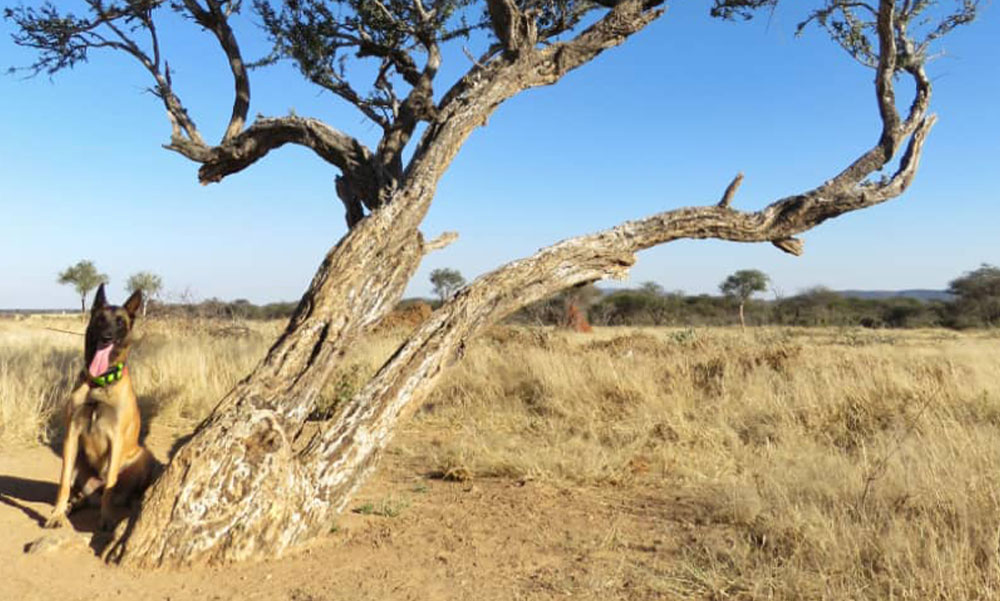
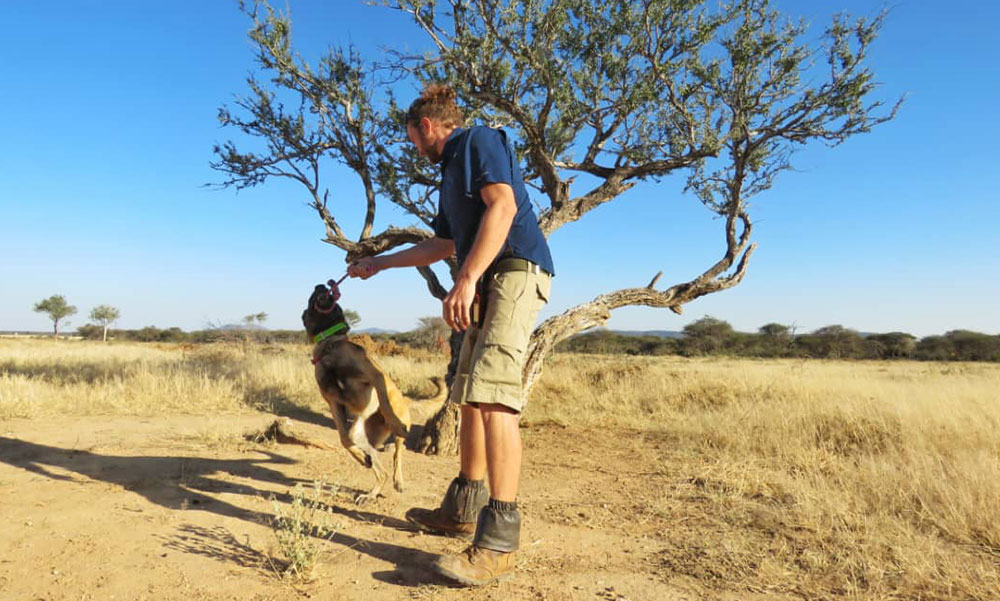
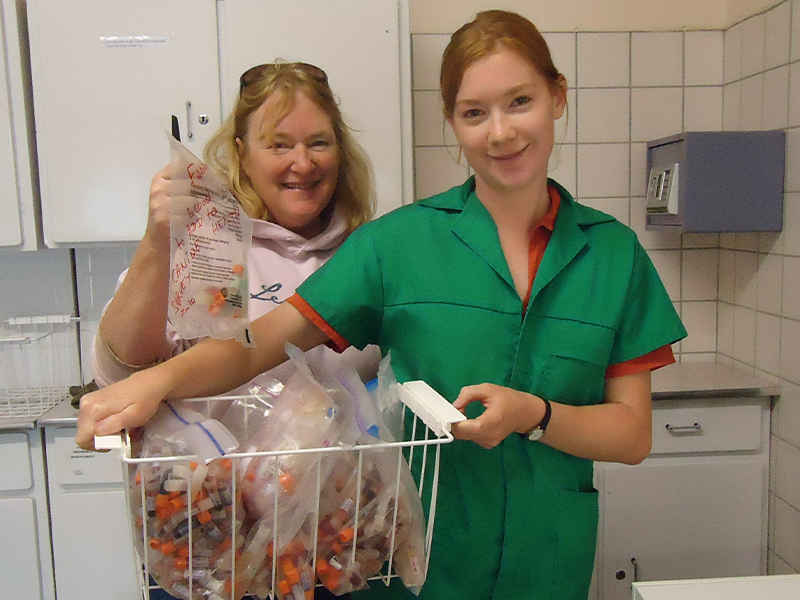
Genetic Samples
CCF has a large sample collection that is available for genetic research. If you are interested in any of the samples outlined on our species list or to make use of our laboratory and/or to collaborate, please contact us at info@cheetah.org.
Cheetah Population Study in Namibia
CCF’s population study for the Namibian cheetah has been ongoing since 1990, with over 750 tissue & 1000 scat samples collected to date. Those samples now allow for research on Namibian cheetah populations over a timespan of 30 years and counting. Population monitoring within CCF’s 50.000 hectares of wildlife conservancy, in combination with genetic analysis via microsatellite markers, allows us to identify individual cheetahs by both visual and genetic traits. As part of this study, Dr. Marker obtained her Phd with Oxford University, for which 322 samples from 7 north-central Namibian regions were assessed genetically, and compared by origin. To further broaden our insight in the structure of cheetah populations, landscape genetic analyses are planned to assess the southern African cheetah A. j. jubatus and it’s diversity.
Illegal Wildlife Trade Studies
To help fight illegal wildlife trade, CCF opened a new safe house in Somaliland, in collaboration with the Somaliland wildlife authorities, built specifically for cheetah cubs recovered from the pet trade. In 2019 alone, the genetics laboratory received 146 samples from 53 individuals. CCF also received samples from various veterinary and breeding facilities in the UAE. To date, 97 have been extracted and genotyped to detect the animals’ origin. In addition to the genetic work, CCF initiated a sperm bank for the UAE, and held multiple workshops on the collection and viable freezing of sperm from adult male cheetahs to preserve the genetic diversity of the source populations.
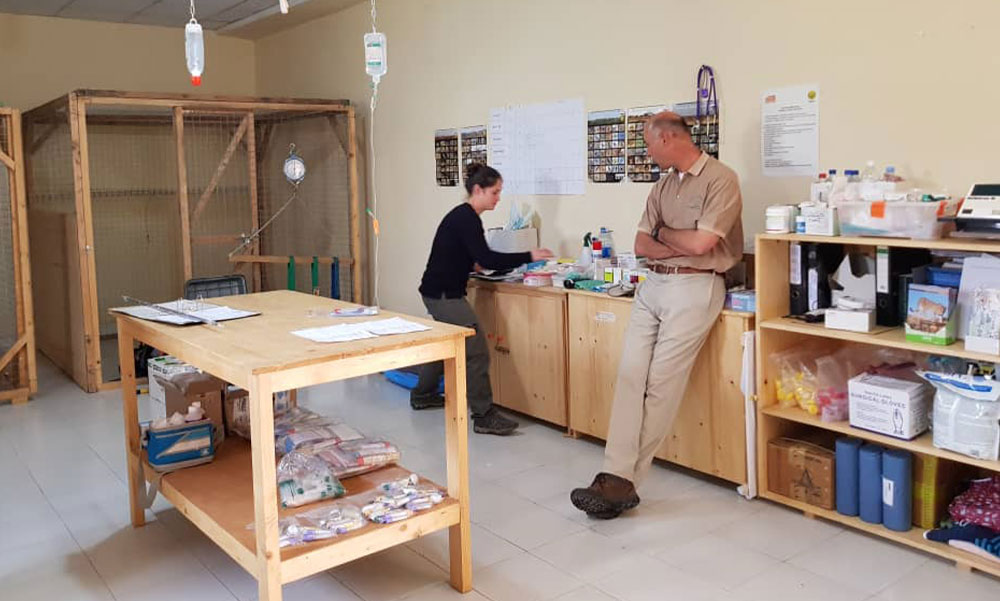
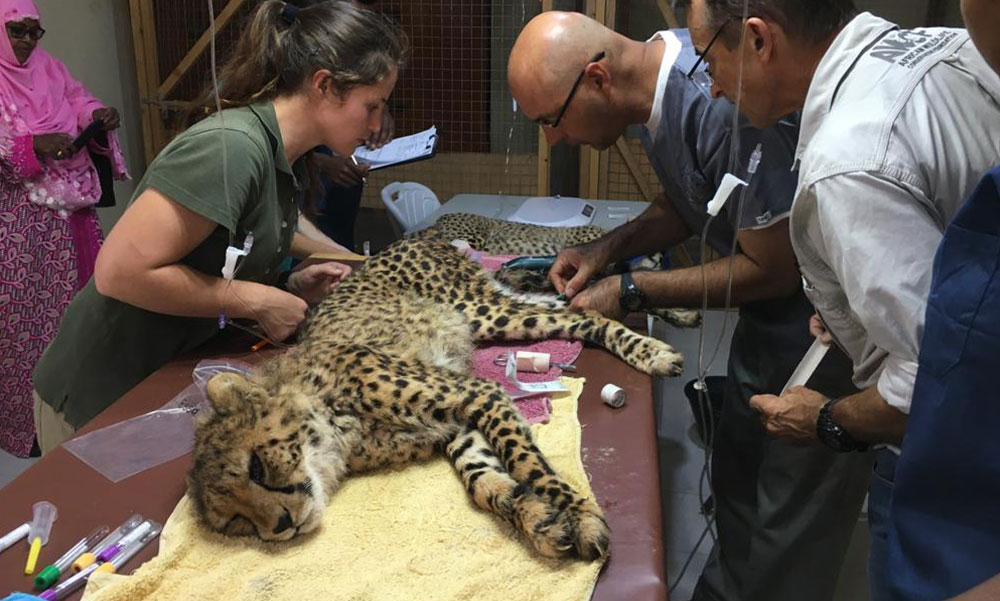
Disease Research
Oxalate Nephrosis
(University of Illinois, USA; SANBI, RSA) Primers for two candidate genes potentially causative of oxalate nephrosis were designed and optimized at CCF and tested on selected cases and controls. To date no mutation was found.
Babesia
Babesia is caused by a parasite living in red blood cells. CCF developed a genotyping assay and is comparing its accuracy compared to visual screening of blood smears. CCF is also
interested in the transmission rate of babesia from affected ticks.
Amyloidosis
(in collaboration with the Smithsonian research institute) the study could confirm a genetic component to the blood levels of amyloid in cheetahs, however, no correlation between the genetic variation and disease status could be established, and housing had a much stronger impact than genetic background.
Carnivore Studies
CCF participates in a number of international collaborations on the genetics of multiple species of carnivores.
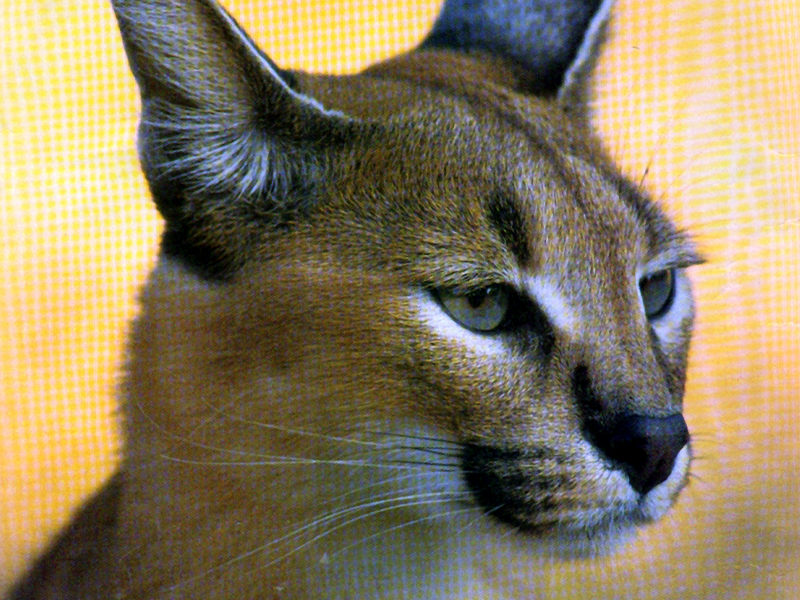
Caracal Study
DNA from Caracal hair and tissue samples, collected from killer traps in South Africa, were extracted and genotyped at the genetics laboratory to assess relatedness and sex of individuals. This study’s aim is to determine sex, genetic profile, and relatedness of the animals.
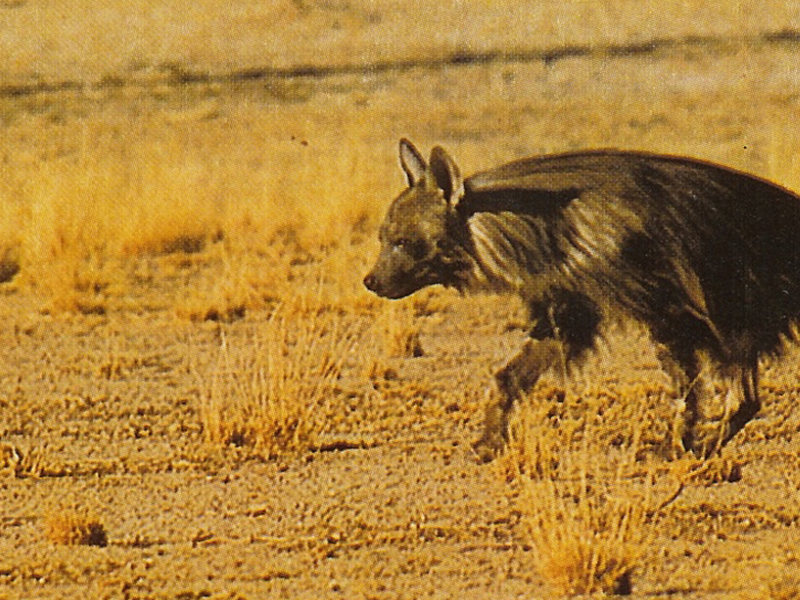
Brown Hyena study
With a set of brown hyena (Hyena brunnea) paste marks we optimized protocols to successfully extract DNA. Based on those paste marks, individuals were identified, and 59 samples were successfully genotyped with published markers. Additional markers are needed, and will be developed.

African Wild Dog & Carnivore Diets
African wild dogs – CCF is performing a study on relatedness on litters that were rescued from human wildlife conflict situations, in order to help advise the best release strategies.
Carnivore species ID & diet – 50 carnivore scat samples were collected and tested for the species they originate from, using a mitrochondrial marker. The diet was determined using hair, bone, exoskeleton, and vegetation analysis.
Herbivore Studies
CCF participates in a number of international collaborations on the genetics of multiple species of herbivores.

Etosha Elephant Relatedness
This study aims to analyse the relatedness between the family members of several elephant herds visiting a waterhole in Etosha National Park. So far, we received 426 elephant scat samples, of which 203 in 2019. High priority samples have been identified, extracted, and partial genotypes obtained for 12 markers.

Buffalo Study
Population structure and gene flow, including the impact of human disturbances on historic vs. recent samples, were assessed in buffalo from northern Namibia. DNAs were extracted at CCF and submitted to a heat inactivation to remove all risk of foot and mouth disease being spread via the samples. Analysis was performed in the USA.
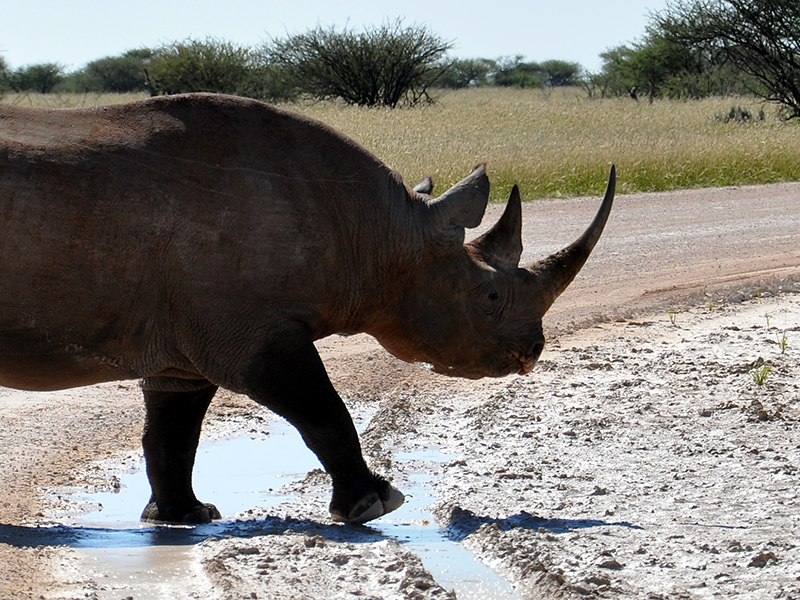
Black & White Rhino Pedigree
A pedigree for white rhinoceros (Ceratotherium simum), performed by visiting researcher Abigail Guerier, from Ongava Wildlife Reserve’s Research Centre, was finalized and published in 2012 as part of Abigail’s MSc. In the beginning of 2013 she started a genetics project on Ongava’s resident population of black rhinoceros (Diceros bicornis) at the CCF genetics laboratory. The project is on-going, and more samples are added as they are collected by the Ongava research team.
The Haas Family Veterinary Clinic
The Haas Family Veterinary Clinic allows us to collect samples from the injured or orphaned cheetahs taken into our facility. The clinic is an ideal space to give prompt veterinary care to non-releasable cheetahs, dogs, goats and other animals that live at our centre.
Cheetah Health and Reproduction
CCF’s on-going research on the wild cheetah includes studying the genetics and relatedness of the population, the incidence of disease, stress hormone levels, and the reproductive health of the population. Through weighing and measuring for morphometric studies, analysis of dental structure and reproductive fitness, CCF is learning more about the overall health of the world’s cheetah population.
Genome Resource Bank
CCF uses best-practice techniques for storing sperm, tissues and blood samples in its Genome Resource Bank (GRB). These materials provide ‘insurance’ for the cheetah’s survival. As a result, CCF maintains one of the largest GRB’s for an endangered species.
Cryopreservation methods continue to be studied and refined in collaboration with the Smithsonian Institution in Washington DC, USA.

Behavior Demographics, Home Range, and Reintroduction
CCF investigates the movement of released cheetahs to determine home ranges, habitat preference and seasonal use, territoriality, and behaviors. The behaviors are unique to individual cheetah populations and may prove critical for the cheetahs’ survival.
CCF develops and implements relocation, reintroduction, and non-invasive monitoring methodologies to ensure a viable wild population. Data is gathered on the status of wild cheetahs across the species’ range.
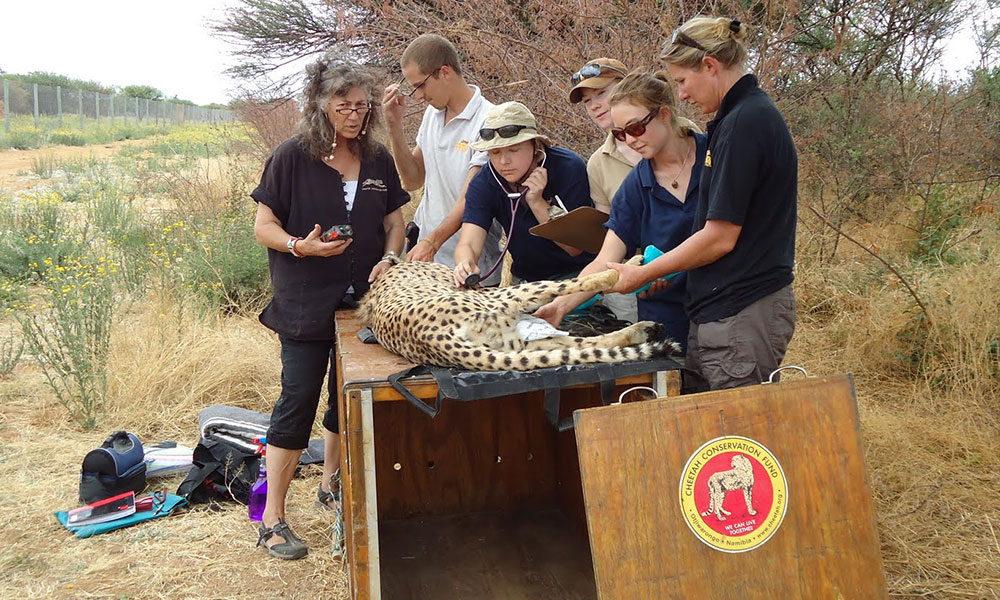
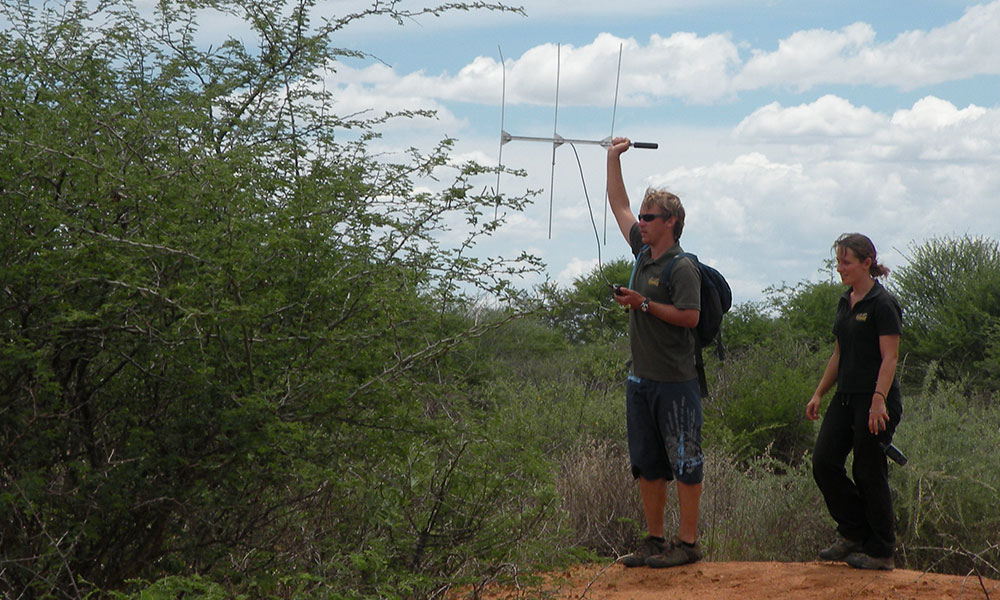
Cheetah Census Research
Cheetahs are very difficult to count using conventional census techniques due to their secretive nature. CCF has tested various census and monitoring techniques to gather scientific research on cheetahs. The research includes radio-telemetry, spoor track counts and camera traps. The data gathered is compared to known density estimates in our research study area.
Ecological Research and Biomass
CCF identifies vegetation and monitors growth patterns within CCF study areas, identifying target areas for ecological management, and investigating how bush encroachment affects biodiversity. CCF also conducts prey base studies that monitor habitat use by game species. CCF collates historical data regarding predation, develops methodologies for the reintroduction of prey species, and encourages standardized prey studies in other cheetah-range countries.
Research projects include studies on habitat restoration and biomass technology development. CCF developed Bushblok clean-burning fuel logs based on the findings of multiple long-term studies.
Investigating Human-Wildlife Conflict
Education on human-wildlife conflict CCF collaborates with farmers to better understand traditional farm management techniques. Perceptions on predators are also collected and studied.
CCF evaluates non-lethal predator control methods in livestock management. These methods can reduce the indiscriminate removal of cheetahs and other predators in the landscape. The research program includes studies conducted at CCF’s Model Farm and CCF’s Livestock Guarding Dogs.
Collaborative Research Partners
CCF has long-term research partnerships with academic and research institutions around the world, encompassing a broad spectrum of subject matter pertaining to the cheetah.
CCF also maintains close ties with zoos and wildlife parks to collaborate on projects involving captive cheetah populations and genetics.
- Beskee Bergen, NL
- Website
- Bronx Zoo
- Website
- SeaWorld & Busch Gardens Conservation Fund, USA
- Website
- IUCN Species Survival Commission (SSC) Cat Specialist Group
- Website
- Cheetah Species Survival Plan of AZA
- Website
- Cincinnati Zoo and Botanical Gardens
- Website
- Colorado State University, USA
- Website
- Columbus Zoo and Aquarium, USA
- Website
- Dallas Zoological Society, USA
- Website
- Disney's Animal Kingdom, The Disney Conservation Fund, USA
- Website
- Safari Park Dvůr Králové, CZ
- Website
- Earthwatch Institute, USA
- Website
- European Endangered Species Plan (EEP) of EAZA
- Website
- Indianapolis Zoo, USA
- Website
- Little Rock Zoo, USA
- Website
- Los Angeles Zoo and Botanical Gardens, USA
- Website
- Maryland Zoo, USA
- Website
- Ministry of Environment, Forestry and Tourism (MEFT), NM
- Website
- Namibia University of Science and Technology (NUST), NM
- Website
- Naples Zoo at Caribbean Gardens, USA
- Website
- National Cancer Institute, USA
- Website
- Paradise Park, UK
- Website
- Parc des Félins, FR
- Website
- Thoiry ZooSafari, FR
- Website
- St. Louis Zoo, USA
- Website
- San Diego Zoo, USA
- Website
- San Francisco Zoo & Gardens, USA
- Website
- Smithsonian's National Zoo & Conservation Biology Institute (SCBI), USA
- Website
- UC Davis, USA
- Website
- University of Florida, USA
- Website
- University of Namibia, NM
- Website
- University of North Carolina at Chapel Hill, USA
- Website
- Virginia Zoo in Norfolk, USA
- Website
- White Oak Conservation, USA
- Website
- Wildlife World Zoo Aquarium & Safari Park, USA
- Website
Related Reading
-
February 18, 2023
Vanier College Students Participate in Bush Encroachment Project -
February 9, 2023
International Day of Women and Girls in Science
